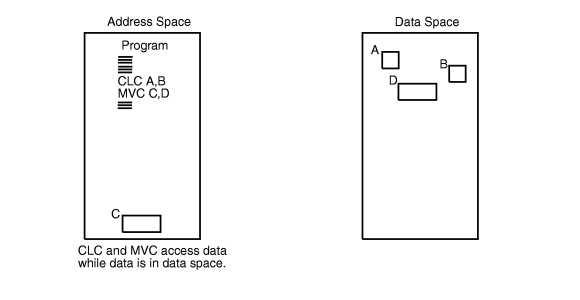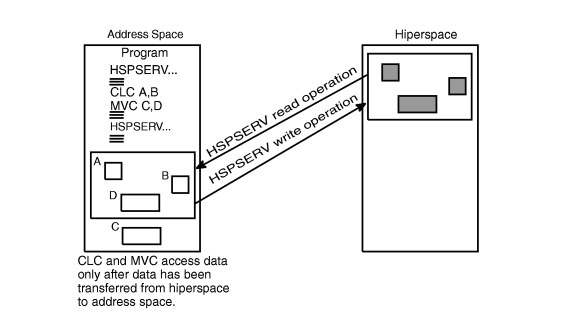Up to this point, the chapter has focused on similarities between data spaces and hiperspaces. By now, you should know whether your program needs the kind of virtual storage that a data space or hiperspace offers. Only by understanding the differences between the two types of spaces, can you decide which one most appropriately meets your program's needs, or whether the program can use them both.
The main difference between data spaces and hiperspaces is the way a program references data. A program references data in a data space directly, in much the same way it references data in an address space. It addresses the data by the byte, manipulating, comparing, and performing arithmetic operations. The program uses the same instructions (such as load, compare, add, and move character) that it would use to access data in its own address space. To reference the data in a data space, the program must be in the ASC mode called access register (AR) mode. Pointers that associate the data space with the program must be in place and the contents of ARs that the instructions use must identify the specific data space.

In contrast, a program does not directly access data in a hiperspace. MVS™ provides a system service, the HSPSERV macro, to transfer the data between an address space and a hiperspace in 4K byte blocks. The HSPSERV macro read operation transfers the blocks of data from a hiperspace into an address space buffer where the program can manipulate the data. The HSPSERV write operation transfers the data from the address space buffer area to a hiperspace for storage. You can think of hiperspace storage as a high-speed buffer area where your program can store 4K byte blocks of data.

On one HSPSERV macro, the program can transfer the data in more than one area between the hiperspace and the address space.